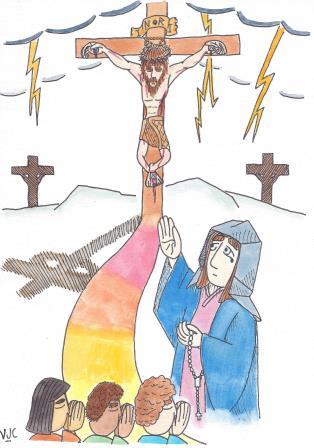In the time of Jesus most people were familiar with the grapevine process. If they weren’t growing grapes in commercial quantity, they certainly had a vine or two at home.
However, for most of us in the 21st century this is not the case.
An exploration of websites and video clips on how to prune a grapevine was eye-opening.
Jesus is the True Vine and we are the branches, and the Father is the vinedresser.
One vintner said that they spend 4-5 months pruning their vines every year. While machines are around to chop off far flung branches, machines cannot replace humans when it comes to the pruning process. Surprisingly pruning is considered the single greatest influence on the quality of the harvest, and the most strategic part of a vintner’s business.
Some plants like roses will produce a harvest from new branches.
But other plants like apple trees and grape vines only produce fruit on 2nd year branches.
This means that the pruning choices have a view to not only this year’s harvest, but also next year’s harvest.
Every grape vine is assessed individually. Each grape vine has a trunk, and most of them have two big branches called cordons. From these cordons the new branches called canes grow, and each cane grows from a bud on an older branch. It is the cane branches that get vastly reduced in the pruning process, so that each spur of previous cane growth has only two promising buds left. Unless these canes are reduced the vines will grow more leaves than grapes and the grapes will be significantly smaller. It is the difference between energy being diffused and energy being concentrated.
If the vine is weak, the vinedresser will leave less buds to grow than average. If the vine is vigorous, the vinedresser will leave more buds to grow than average.
A wine grower can time rather accurately the interval between pruning and the emergence of new growth; and will use this knowledge to stagger the order in which the sections of vineyards are pruned, so as to stagger the resulting harvests from those vineyard sections. That way, if there is adverse weather at harvest time, not all of it will be lost.
So what does this mean for us?
It means that God the Father invests a massive amount of time and forward planning with each and every one of us individually. Please linger with that thought for a while, and give it a chance to sink in.
It means that on a regular basis He is going to take away things from our lives that are less fruitful in order that more fruitful aspects of our lives can flourish. Knowing this should enable us to more graciously yield to the Father’s will when the time comes to let go of a relationship, place, ministry, hobby, job, - and levels of health and independence.
It means that we should have a level of patience when something new shows up in our lives, or in the lives of others, because often fruitfulness doesn’t come until the second year.
It means that after a period of loss and of feeling dormant, stuck, becalmed, that we can expect a lot of flourishing to happen that feels like it is happening ‘all at once’. But that we need discernment to work out the part of that new growth that the Father is favouring, and to co-operate with that.
It also means that two major things on the front burner and two quietly on the back burner are about as much as anyone can deal with fruitfully.
It means that until we work out what God is favouring, ‘or blowing on’, we should hold all of that new flourishing lightly, because most of it will get trimmed away relatively quickly.
It means that we should trust in Him more, especially when the parts of our lives that He prunes are very painful to let go of.
Amazingly challenging, yes?
Dear Heavenly Father, please help us to co-operate more fully with You every time a new season of pruning takes place in our lives. Please grant us the patience and discernment that we need to find the new beginnings that You have lovingly chosen for us. Amen.

 RSS Feed
RSS Feed